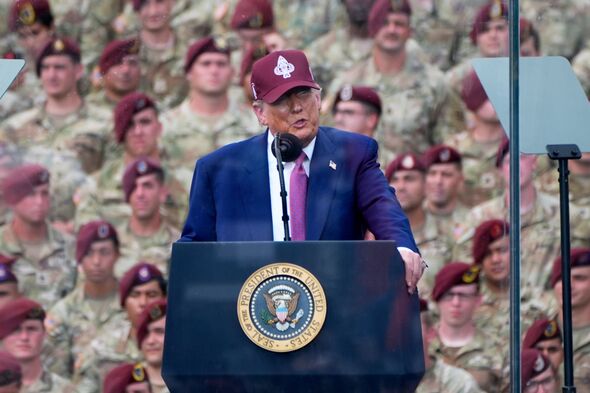President Donald Trump’s tenure has been marked by a series of unconventional decisions, particularly concerning the nation’s armed forces, leading to a significant departure from centuries-old U.S. military traditions and sparking widespread debate about the interplay between political influence and military leadership. Critics argue that these actions reflect an unprecedented effort to align government institutions with a personal agenda, rather than upholding established norms.
A prime example of this shift emerged with new procedures for confirming four-star generals, mandating personal meetings with the President before finalization. This direct oversight is a clear break from past practice, raising alarms among observers who perceive it as an attempt to treat highly decorated military leaders as political appointees, with loyalty to the executive branch potentially overshadowing professional independence and merit.
While proponents, including figures close to the administration, assert that these changes are necessary to ensure the military retains its ‘superiority’ and that its leaders remain focused on national objectives, the perceived politicization of the armed forces continues to draw scrutiny. Defense Secretary Pete Hegseth, reported to have initiated these new protocols, is central to the administration’s strategic overhaul of military engagement.
The current administration’s leveraging of the US military for partisan goals is not an isolated incident. Previously, amidst largely peaceful protests, President Trump controversially mobilized the National Guard and Marines in major U.S. cities, directly against the objections of local governors. These deployments ignited heated public exchanges, with governors accusing the president of overreaching and behaving tyrannically.
Further concerns about political influence were amplified by events such as a campaign-style rally held at Fort Bragg, North Carolina, where uniformed soldiers were observed cheering as the President criticized political opponents. Such appearances fueled accusations that the military was being utilized as a political prop, undermining its non-partisan standing and posing questions about the chain of command’s integrity.
Moreover, a grand military parade in Washington, D.C., ostensibly to celebrate military anniversaries and even the President’s birthday, drew sharp comparisons to spectacles commonly associated with authoritarian regimes. Despite efforts by military leaders to depoliticize the event, many casual observers struggled to view it as anything other than a blatant political use of the military, further cementing the perception of governmental institutions being bent to a personal will.
The aspiration for such a parade dated back to the President’s first term, yet faced initial resistance from senior commanders who worried it would project an image unbefitting the United States, more akin to those seen in countries like North Korea. Following his return to the White House, the chairman of the Joint Chiefs of Staff was reportedly fired, replaced by the President’s own selection, alongside the dismissal of several other top military leadership figures, signaling a concerted effort to reshape military high command.
These developments collectively underscore a significant historical juncture for the US military, challenging traditional boundaries between civilian political authority and military independence. The ongoing debate centers on how these shifts will impact the long-term integrity and perceived neutrality of one of the nation’s most respected institutions, and whether the pursuit of presidential power could irrevocably alter the foundational principles of its command.






Leave a Reply